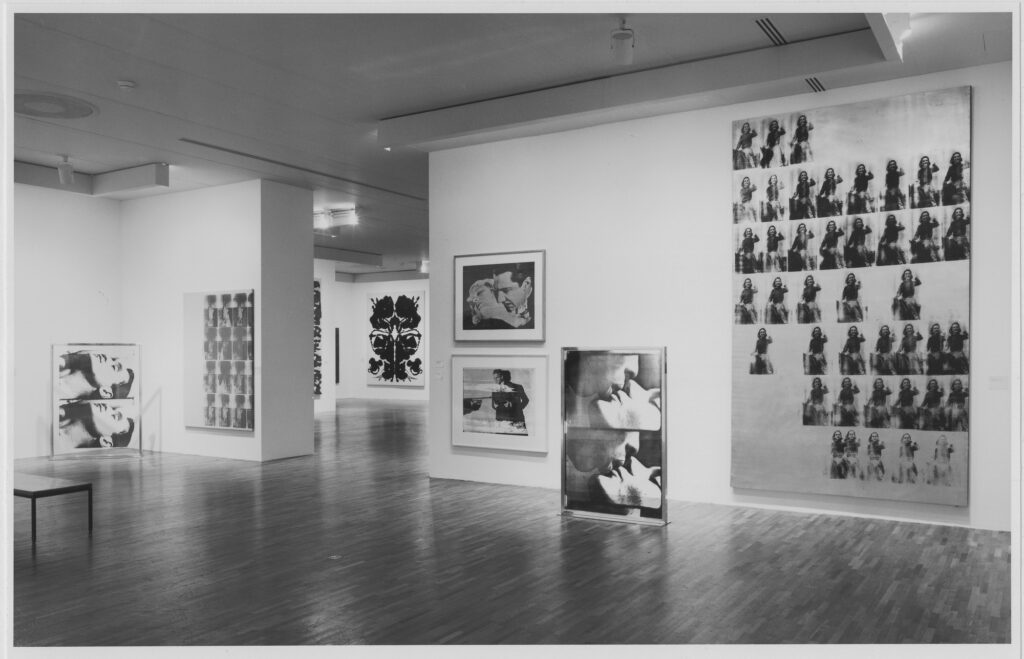
Tracking that Round Jackie took me back to MoMA’s 1989 Warhol retrospective, and now I wonder why I never think about Warhol’s Plexiglas sculptures.
Large Sleep and Large Kiss are two of at least five examples of Warhol screenprinting frames from a film onto Plexiglas. He made them a couple of years after the films, as he was supposedly retiring from painting. According to Marco Livingstone’s essay in the MoMA catalogue, Warhol also made Plexiglas sculptures of frames of Empire, Couch, and Henry Geldzahler.
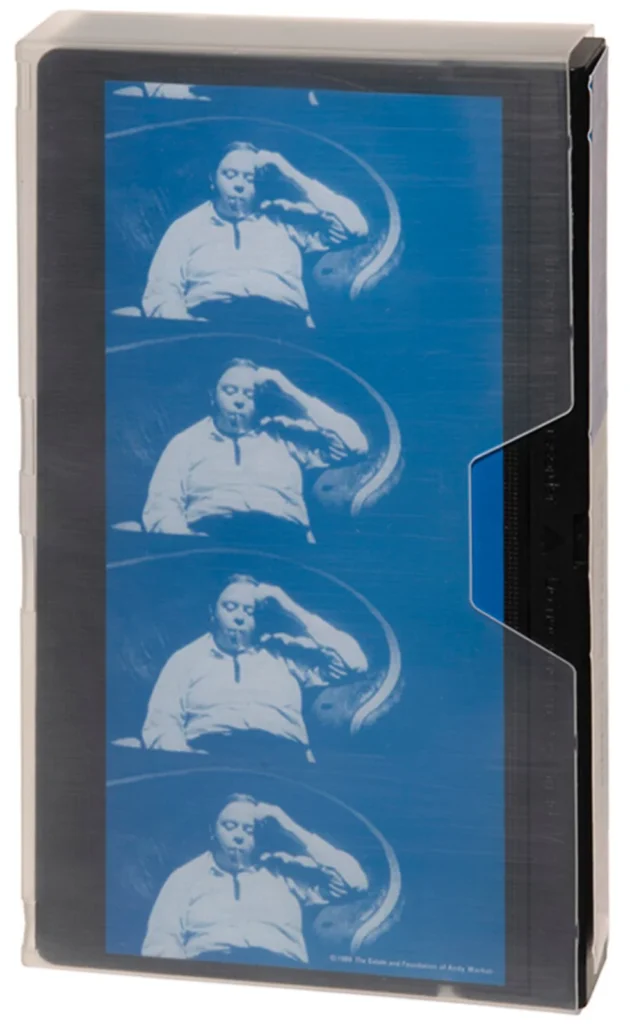
Was MoMA the first place these were ever shown? They look so much like Duchamp’s Large Glass it’s crazy that no one seems to have made the connection until 2017, when Thomas Morgan Evans published 3D Warhol, the first book on the artist’s sculpture. Warhol’s intersections with Duchamp were dense: a Bôite-en-Valise, Richard Hamilton, the Pasadena retrospective, Mark Lancaster, Screen Tests, “retiring,” and, here, making Large Glass-looking sculptures with Large in the name.
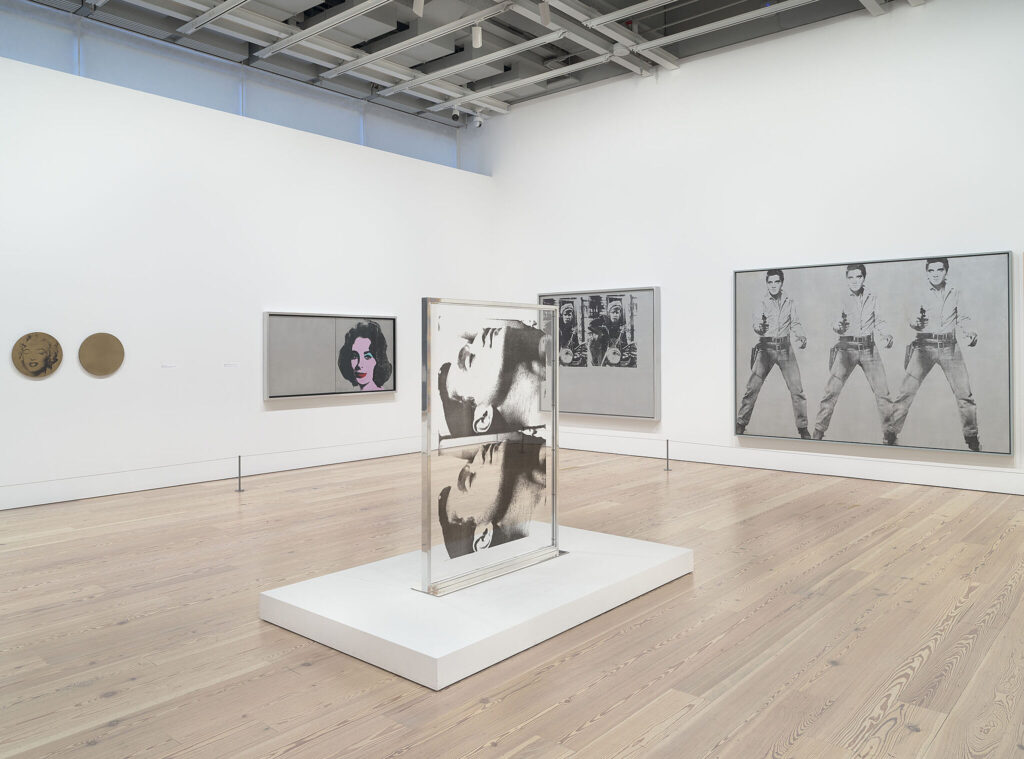
So it’s a little weird that MoMA’s 1989 catalogue reproduced them without their frames, essentially negating their sculptural nature and throwing them squarely back into Warhol’s image pool. Livingstone traced their origins to the acetate transparencies used to make Warhol’s screens, which sometimes decorated the walls of the Factory. It’s not wrong, but still.
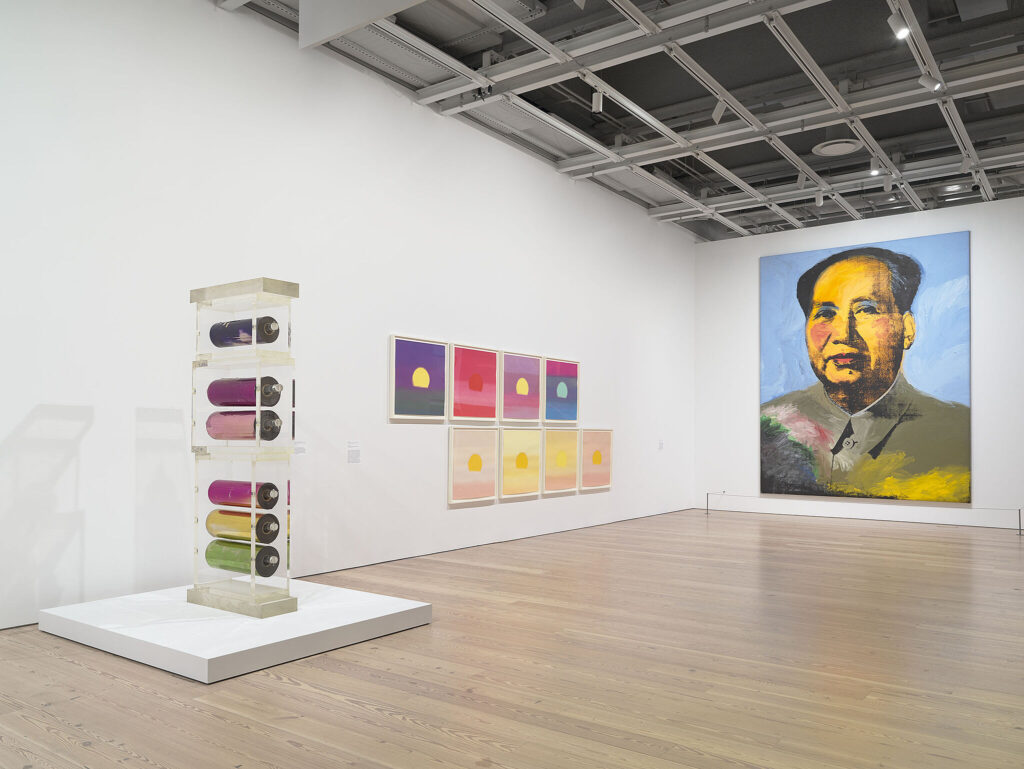
Though they’ve been on view at the Warhol Museum over the years, the 2018-19 Whitney/SFMOMA retrospective was probably the biggest audience for Large Sleep in 30 years. But who even noticed, when Mylar and Plexiglas Construction was hogging the spotlight? What. Was. Going. On?
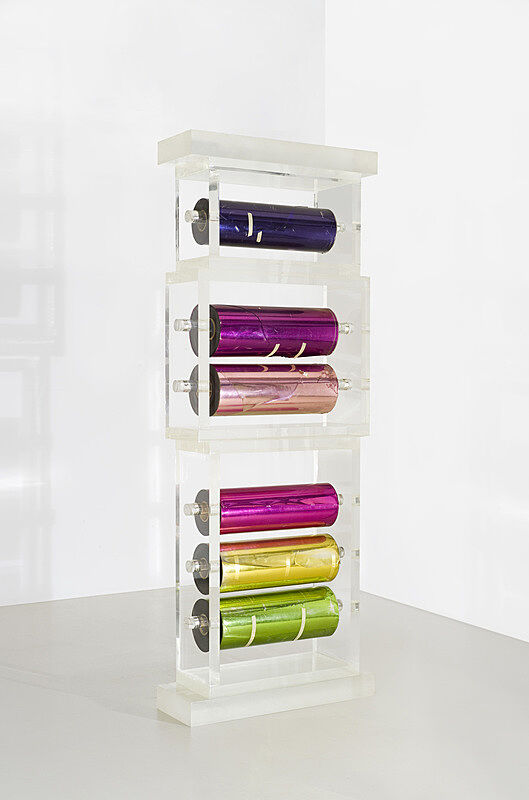
If Large Sleep was a throwback to Duchamp, Mylar and Plexiglas Construction somehow throws forward to Koons. Warhol made this flaming Minimalist monument the year after Stonewall, the year his Rain Machine (Flower Waterfall) sculpture debuted in the US Pavilion at Osaka 70 World Expo; and the year before James Bidgood anonymously released his cellophane fantasy film, Pink Narcissus. Morgan Evans says that this was functional and made for the Factory. But unlike the film-related sculptures, this one got out; it’s in a private collection somehow, somewhere.
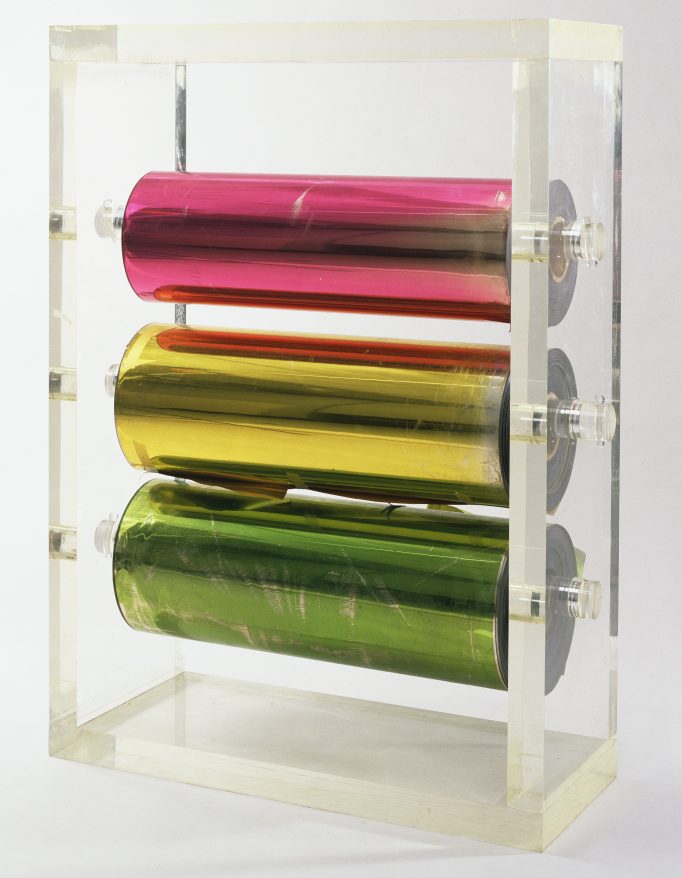
[a few still-fixated days later update: In their bio of the artist, the Warhol Foundation included an image—uploaded in 2021—of the bottom element of the Whitney Mylar and Plexiglas Construction as its own thing, with a date of “1970s”. The patterns on the Mylar match, so it’s not some rogue second or fourth construction. I’m going to have to visit the CR, I guess.]
